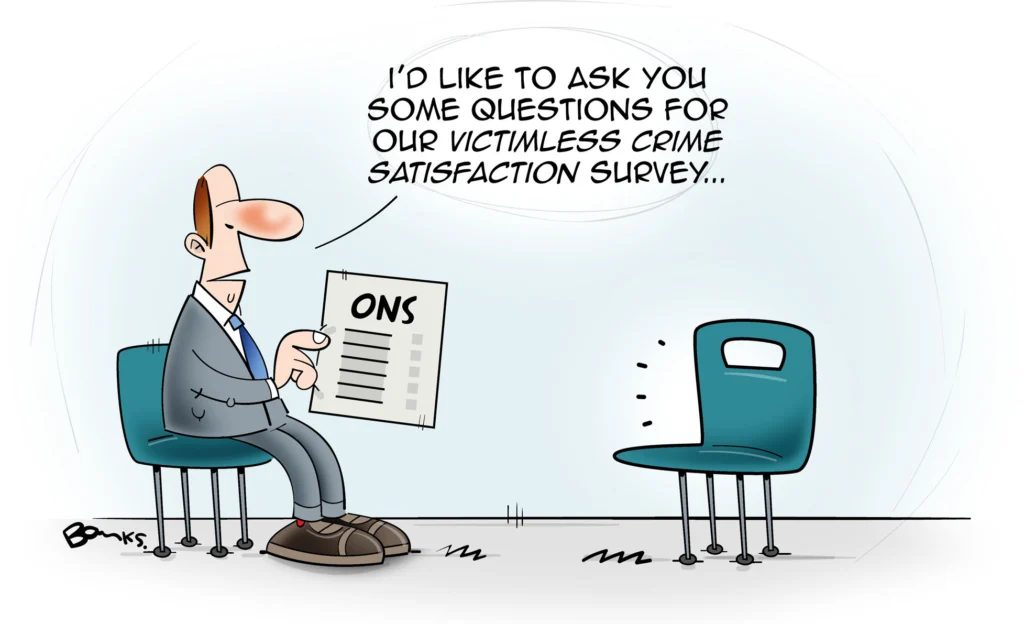Analysis
Public order policing: dealing well with the spirit of non-co-operation

Chris Hobbs attends the Sisters Uncut pro-Palestinian march where there was little trouble despite the organisers refusing to engage with the police
The first Saturday after the festive season predictably saw the resumption of protests supporting the Palestinian cause and condemning the response of Israel to the 7th of October atrocity.
The 6th of January was designated as a day of local protest across the country plus a central London event organised by ‘Sisters Uncut,’ and supported by Black Lives Matter. As was seen at a previous Sisters Uncut event for Palestine, the organisers again attempted to ‘wrongfoot,’ police by only announcing their 12-noon meeting point at 10am the same morning. On this occasion it was by the drinking fountain in St James’s Park which is adjacent to Birdcage Walk.
Once again, unlike those groups who organise the major pro-Palestinian events, Sisters Uncut, refused to participate in the usual legal requirements necessary to undertake such a protest which would, as previously, include a march. The Met, therefore issued a statement which noted that Sisters Uncut had refused to ‘engage,’ with police.
At noon, around 400 protesters had gathered, a number of whom were masked, and speeches began as more individuals and groups appeared from nearby St. James’s Park Station. The tone of the protest became obvious as those present were told not to accept leaflets that were being handed out by officers and indeed not to talk to officers at all. Protesters were also informed of a ‘requirement’ to intervene in the event of any arrest.
Further police carriers appeared and it soon became clear that the Met had decided that action was required in respect of this protest. A serial of officers moved through the crowd and apprehended the female speaker who, I was told by a journalist, was one of the organisers. This prompted a predictable angry reaction from the crowd and amidst screaming, shouting, pushing and shoving, the prisoner was extricated and escorted to a police carrier. Another arrest was also made and amidst scenes that doubtless seemed ugly to watching, intrigued tourists, officers neatly formed a cordon across the road thus preventing the crowd from following the arresting officers and prisoners to the waiting carriers.

The atmosphere soon calmed and the protesters, now numbering just over a thousand, began marching away from the police cordon, towards Parliament Square. Their entry into Parliament Square, past tourists who were distracted from queueing to be photographed by the red telephone boxes, suggested a destination of Downing Street but then I was told that the plan was to stage a ‘die in.’
Cordons
This appeared confirmed when the march failed to turn left into Whitehall and continued towards Westminster Bridge. Police quickly formed a cordon but there were insufficient officers and the crowd pushed their way through. However, a second and stronger cordon was quickly established which effectively split the march in two with the smaller number reaching the junction with the Embankment.
It appears likely that the intention was to stage the ‘die in,’ on Westminster Bridge before a walkabout into south London but the Met brought up several carriers and access to the bridge was blocked. During this period there was the occasional bout of pushing and shoving between officers and protesters which may have looked dramatic for those wishing to portray the protest as a rampage by lawless hordes but was more reminiscent of the CND type marches of the sixties.
Police then implemented a very neat ‘hinge,’ manoeuvre which moved the cordon as a unit, from Bridge Street to across the Embankment. This enabled to protesters to reunite and approach the line of carriers but no attempt was made to gain access to the bridge.

On what was a bitterly cold day some protesters decided to sit on the roadway which actually gained a degree of respect from watching officers and spectators given the temperature.
Homeward bound
After a while, there was movement from the protesters who walked back along Bridge Street towards Parliament Square. There they were met by police carriers and another cordon of officers. Thus, there were two cordons which enclosed protesters and visitors alike although officers were briefed to allow those through who clearly were not part of the protest.
This left the protesters only one means of exit; the main entrance to Westminster Station. Accordingly, they came down the steps into the station forecourt where they could have left the cordoned area by taking a pedestrian subway to another exit; the alternative option was to take the escalators down to the train platforms and depart. Most chose the latter and began their journey home. This funnelling of protesters towards a means of leaving the area appeared to be a deliberate tactic and drew praise from those familiar with the policing of such protests.
Conclusions
Both the mainstream media and sections of social media, again portrayed this protest as a major public order ‘hate’ incident. Those on the leftist side of the political spectrum again suggested heavy handed policing with one commentator stating tasers were part of the policing operation.
There was pushing, shoving and anger but nothing that could be described as untoward. Much was made of the protesters blocking Westminster Bridge but, if that was the intention, the police got there first.
In all there were just two arrests and no officers were injured. There was no need for those officers to don protective equipment and no batons were drawn. Reference was made to the blocking of traffic but demonstrations and marches frequently block that area of central London that stretches from Trafalgar Square down to Parliament Square. Certainly, the violence that was clearly visible during anti-Lockdown protests and, more recently, by ‘Cenotaph protecting’ counter- protesters on November the 11th, was absent.
Future events
This Saturday, however, see another national protest in central London which probably will attract between 50,000 and 100,000 protesters. Journalists will doubtless be scrutinising the entire march for any offensive, illicit placards, posters or chants as will police officers. Chants that Israel is a terrorist state will be prominent as will the contentious ‘’from the river,’ mantra. There will doubtless be a minority from the tens of thousands who would be delighted if the protest degenerated into serious disorder involving running battles with police, smashed windows and looting.
However, if this protest follows the usual pattern, the overwhelming majority will depart after the speeches have been concluded while groups of recalcitrant youths will gather together and have to be dealt with by officers.
On the Sunday, there is a ‘Stand with Israel,’ rally at an, as yet, undeclared venue. Several similar events have previously been dignified and without any major issues other than the arrest of Tommy Robinson after organisers made it clear he was not welcome. At a Trafalgar Square rally, the only problem concerned half a dozen 15 to 16- year- olds who attempted to unfurl a Palestinian flag as the event closed before being detained by officers.
The Met investigates Israel?
Last Saturday’s Sister’s Uncut protest coincided with media indignation that concerned the Met who apparently decided to unilaterally investigate the state of Israel for war crimes. Despite their explanation that this was a general appeal in relation to events in this part of the Middle East, full feature articles criticising the Met for investigating Israeli ‘war crimes’ appeared in the press and the above criticism was echoed thousands of times on social media.
Had those criticising the Met carried out any research, they would have seen that similar appeals had been launched in respect of Ukraine and the barbaric activities of Islamic State. I can also recall appeals at airports being made in respect of the bloody conflicts that engulfed the former Yugoslavia in the nineties.
Doubtless for as long as the tragic events in the Middle east continue, the Met will have to endure criticism from sections of the right for being too soft on pro-Palestinian protesters while, as stated above, some on the left will accuse Met officers of ‘heavy handed’ policing and supressing the democratic right of protest.
Meanwhile, in addition to policing these and other frequent protests, front-line Met officers and their partners from the City and BTP, will continue their attempt to respond to both the deteriorating law and order situation in the capital and the increasing demands being made upon their services.
Chris Hobbs is a former Special Branch officer who follows public order events as an observer for Police Oracle
Category: OpsPublic Order
Advertisement
Job of the week
Police staff investigator (PIP 2)

- Devon & Cornwall Police
- PPU, Ashburton; PPU, Torquay; PPU Bodmin CID Torquay; CID Exeter, CID Barnstaple, CID Liskeard, CID Bodmin, CID Newquay, CID Falmouth, CID Cambourne, CID Penzance, CID Charles Cross
- Grade 7 - Starts at £36,630 rising by yearly increments to a maximum of £40,893 per annum
We are proud to be expanding our team and strengthening our investigative capacity across Devon and Cornwall by recruiting up to 35 experienced Police Staff Investigators (PIP 2) to help us deliver the highest level of service to our communities. Vacancies are within our Criminal Investigation Department and Public Protection Units.
Read more

